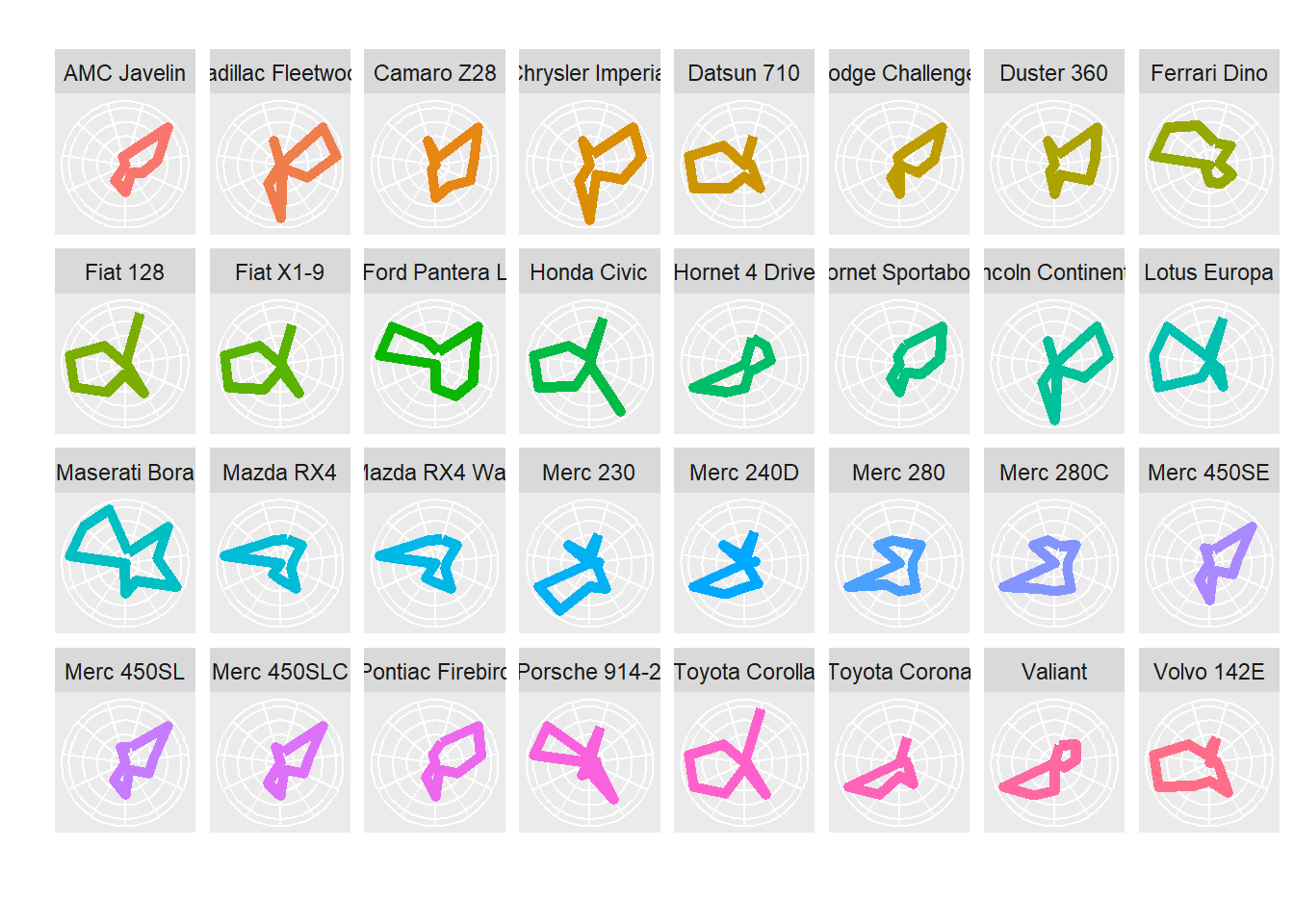From Parallel Plot to Radar Plot
ggplot2 provides a very elegant way to describe graphics. In this example, we will use its grammar to show how the parallel plot and the radar plots are related.
Our example relies on the mtcars dataset. We need first to rescale all the coordinates within \(0\) and \(1\) and to melt the dataset in order to plot it easily with ggplot.
library(tidyverse)mtcars_pivot <- mtcars |>
as_tibble(rownames = "model") |>
mutate(across(-model, ggplot2:::rescale01)) |>
pivot_longer(cols = -model, names_to = "variable", values_to = "value") |>
mutate(variable = fct_inorder(variable))We can now use ggplot and its geom_path geometry to obtain a single parallel plot
library("ggplot2")
ggplot(mtcars_pivot, aes(x = variable, y = value)) +
geom_path(aes(group = model, color = model), size = 2) +
theme(strip.text.x = element_text(size = rel(0.8)),
axis.text.x = element_text(size = rel(0.8)),
axis.ticks.y = element_blank(),
axis.text.y = element_blank()) +
xlab("") + ylab("") +
guides(color = guide_legend(ncol=2))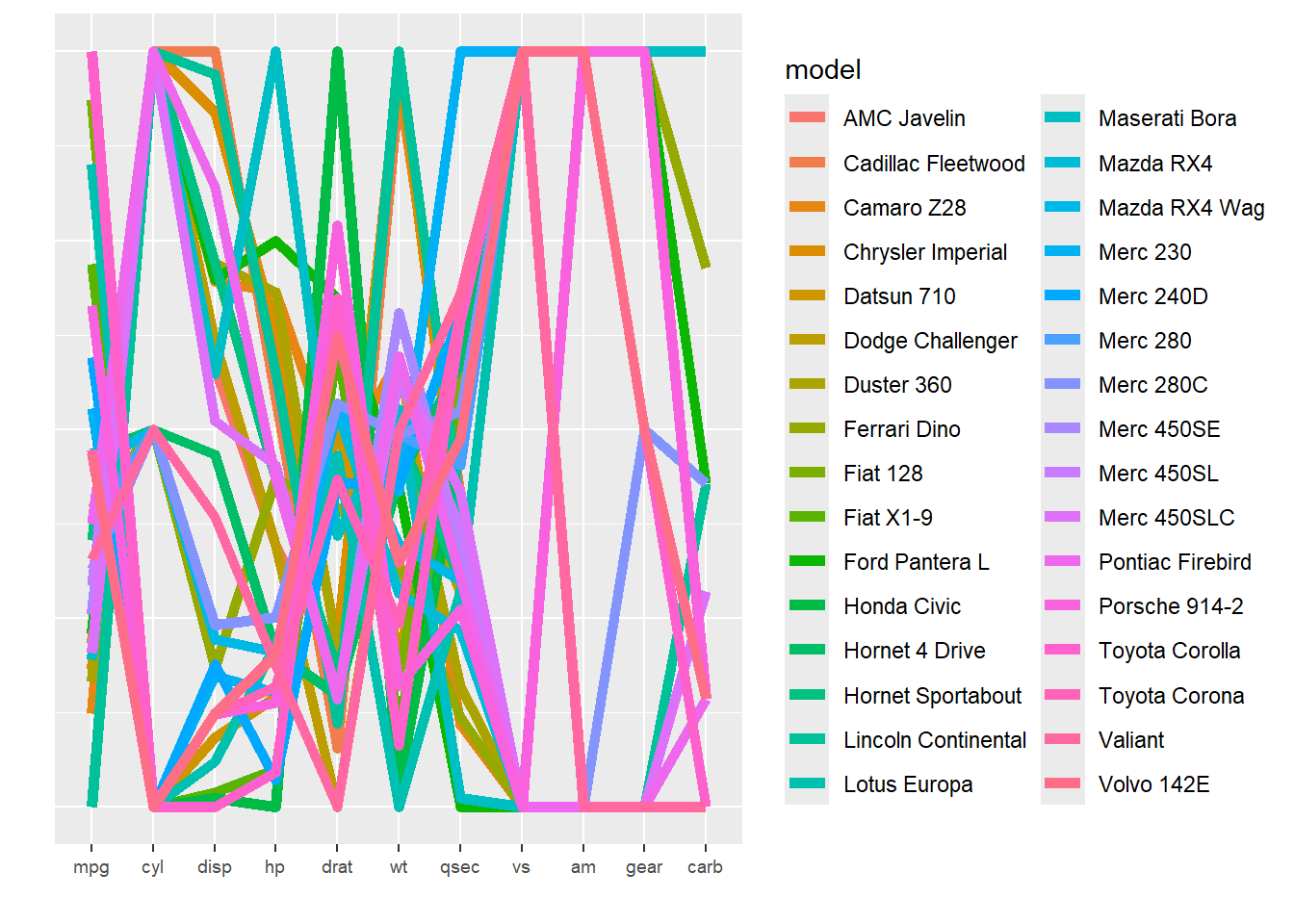
or a small multiple one
ggplot(mtcars_pivot, aes(x = variable, y = value)) +
geom_path(aes(group = model, color = model), size = 2) +
facet_wrap(~ model, nrow = 4) +
theme(axis.ticks.x = element_blank(),
axis.text.x = element_blank(),
axis.ticks.y = element_blank(),
axis.text.y = element_blank()) +
xlab("") + ylab("") +
guides(color = "none")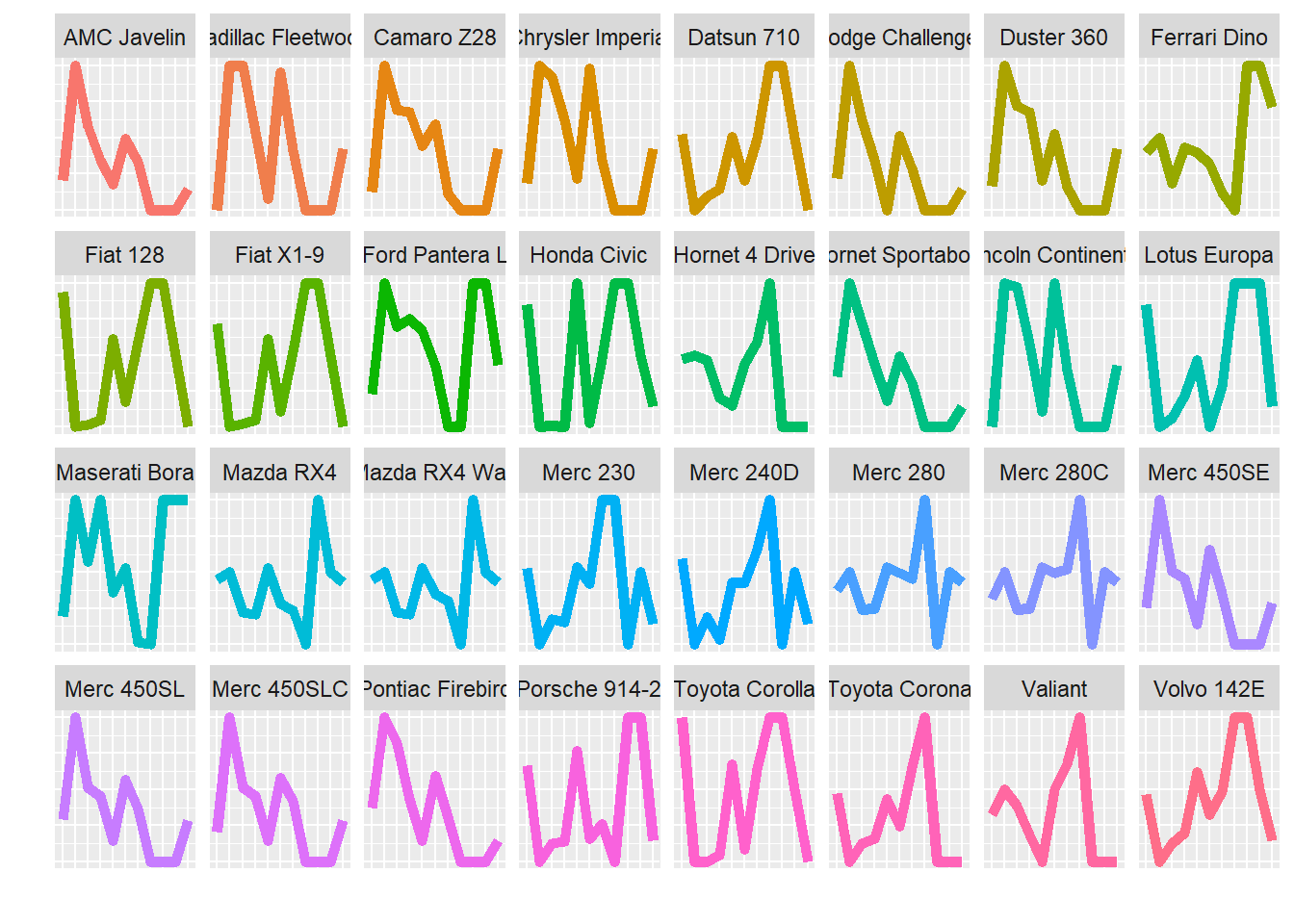
Now the most natural way to convert those figures to a radar plot is to display them in polar coordinates. Indeed, we obtain
ggplot(mtcars_pivot, aes(x = variable, y = value)) +
geom_path(aes(group = model, color = model), size = 2) +
theme(strip.text.x = element_text(size = rel(0.8)),
axis.text.x = element_text(size = rel(0.8)),
axis.ticks.y = element_blank(),
axis.text.y = element_blank()) +
xlab("") + ylab("") +
guides(color = guide_legend(ncol=2)) +
coord_polar()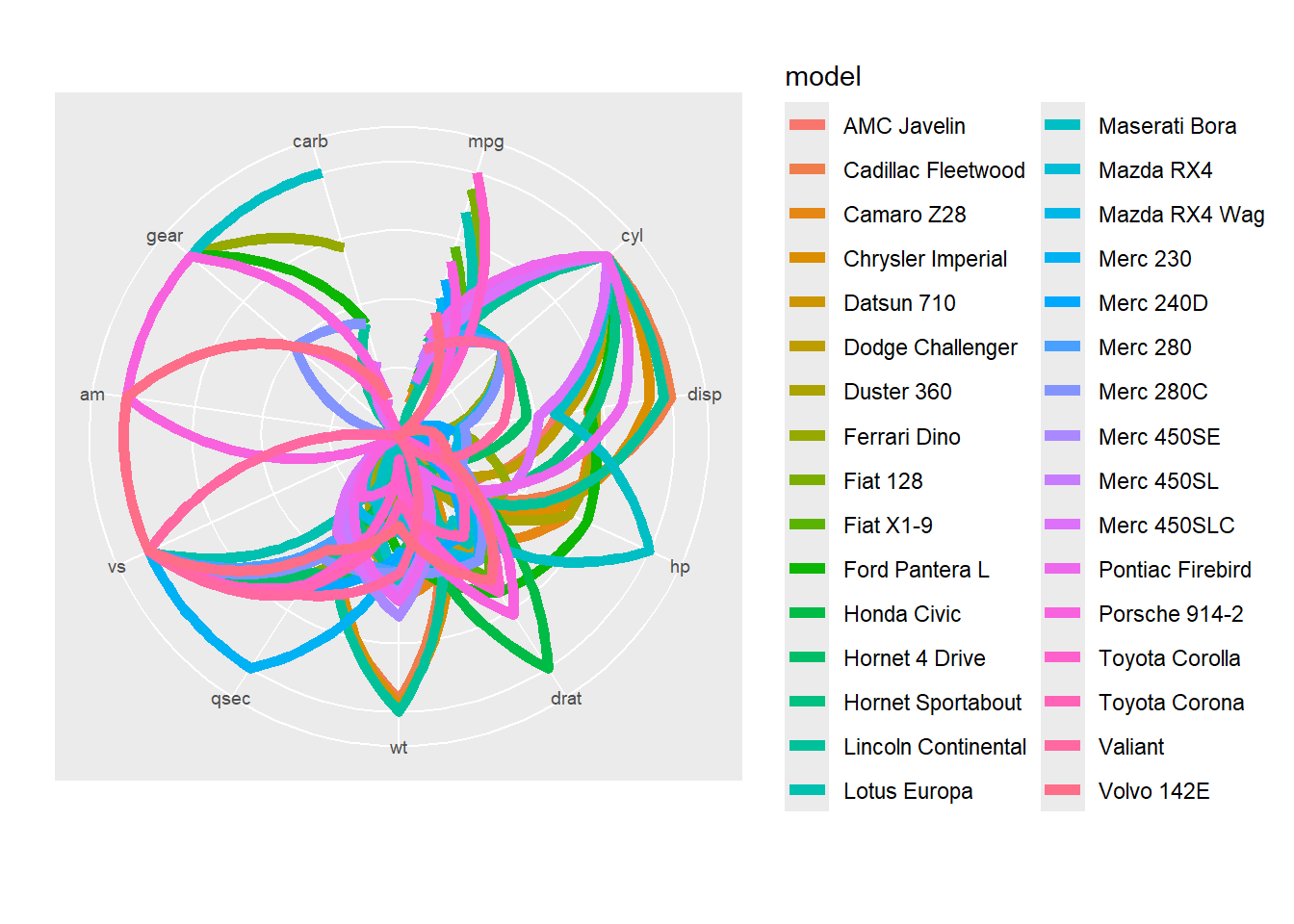
and
ggplot(mtcars_pivot, aes(x = variable, y = value)) +
geom_path(aes(group = model, color = model), size = 2) +
facet_wrap(~ model, nrow = 4) +
theme(axis.ticks.x = element_blank(),
axis.text.x = element_blank(),
axis.ticks.y = element_blank(),
axis.text.y = element_blank()) +
xlab("") + ylab("") +
guides(color = "none") +
coord_polar()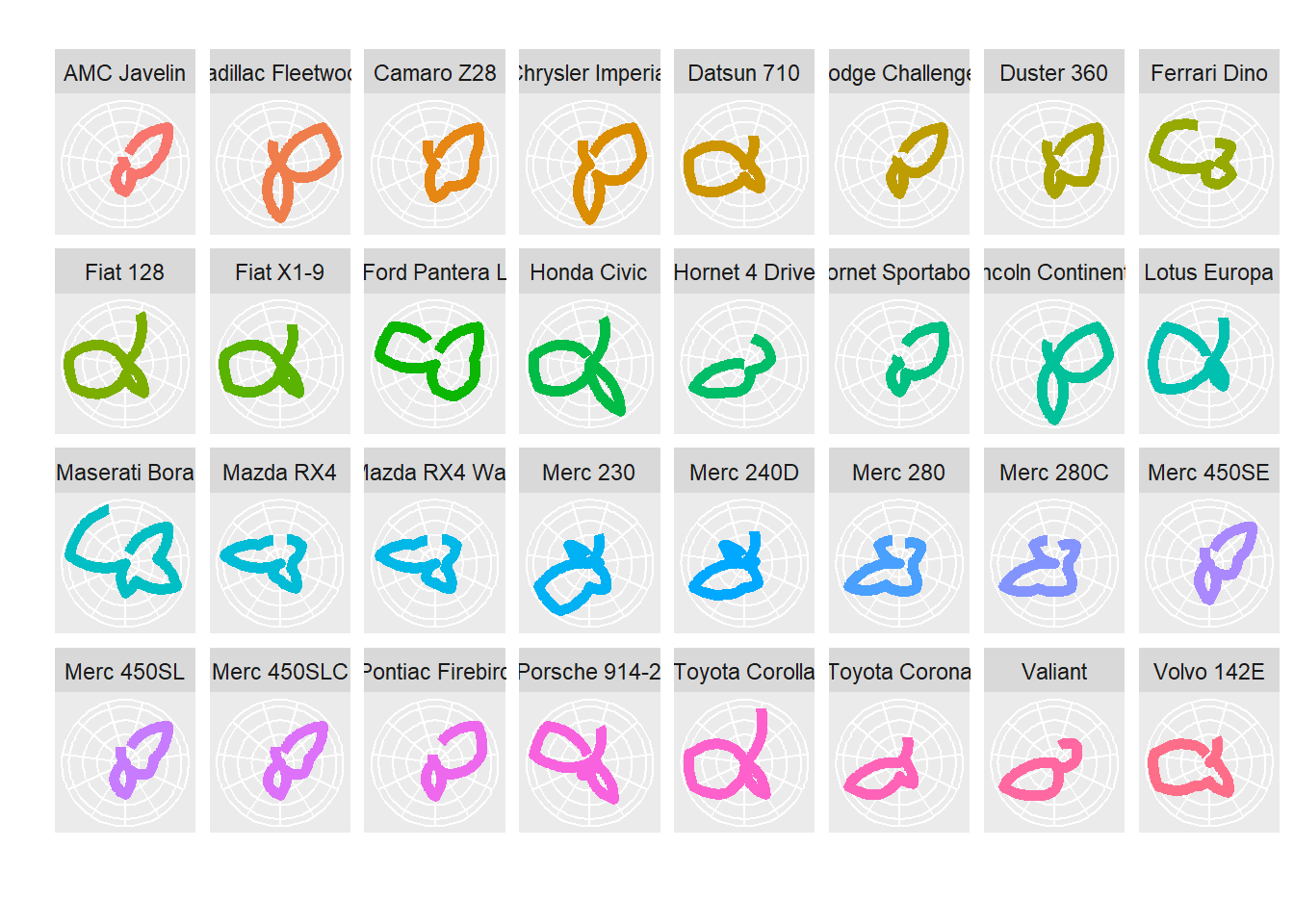
We can see too issues: first the straight lines are converted into curves and second the path is not closed. Those two issues can be solved with ggplot2! For the first one, we will use a trick provided by Hadley Wickham himself and for the second the geom_polygon geometry (as well as geom_path to obtain a nice legend…)
We first define a radar coordinate system:
coord_radar <- function (theta = "x", start = 0, direction = 1)
{
theta <- match.arg(theta, c("x", "y"))
r <- if (theta == "x")
"y"
else "x"
ggproto("CordRadar", CoordPolar, theta = theta, r = r, start = start,
direction = sign(direction),
is_linear = function(coord) TRUE)
}ggplot(mtcars_pivot, aes(x = variable, y = value)) +
geom_polygon(aes(group = model, color = model), fill = NA, size = 2, show.legend = FALSE) +
geom_line(aes(group = model, color = model), size = 2) +
theme(strip.text.x = element_text(size = rel(0.8)),
axis.text.x = element_text(size = rel(0.8)),
axis.ticks.y = element_blank(),
axis.text.y = element_blank()) +
xlab("") + ylab("") +
guides(color = guide_legend(ncol=2)) +
coord_radar()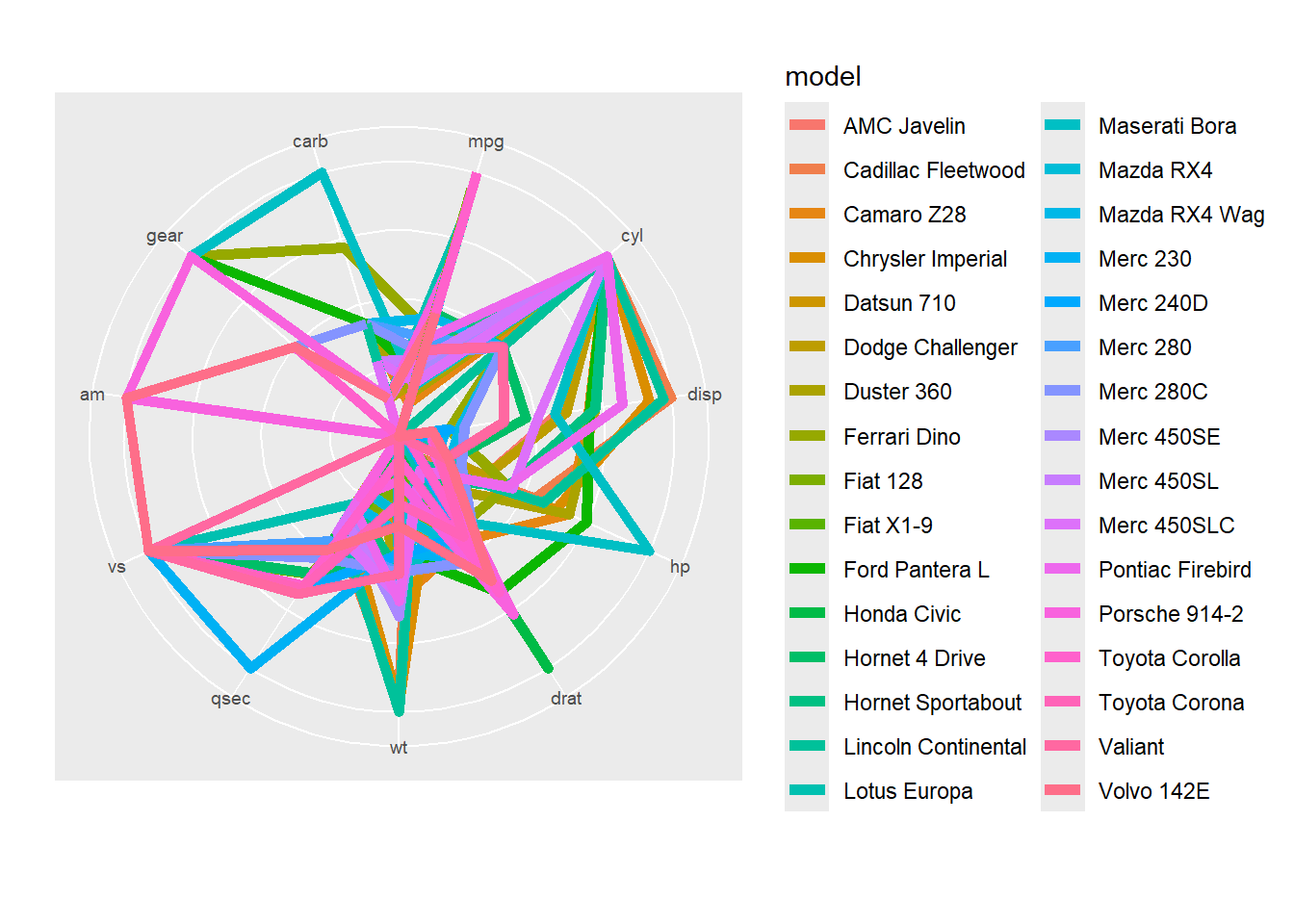
and
ggplot(mtcars_pivot, aes(x = variable, y = value)) +
geom_polygon(aes(group = model, color = model), fill = NA, size = 2) +
facet_wrap(~ model, nrow = 4) +
theme(axis.ticks.x = element_blank(),
axis.text.x = element_blank(),
axis.ticks.y = element_blank(),
axis.text.y = element_blank()) +
xlab("") + ylab("") +
guides(color = "none") +
coord_radar()